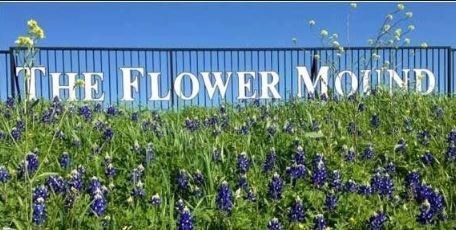Transmission Repair Shop Flower Mound Tx
Free Towing W/Major Repair
Over 35 Years in the Transmission Repair Business
ASE Certified Techs
Get An Estimate
Fill Out the Form Below and Will Contact You Back

Transmission Shop Serving Flower Mound Tx
Even though Eagle Transmission Shop
is located in Denton Tx, we service all surrounding cities including Flower Mound , TX. Eagle Transmission Shop in Denton is your local transmission repair shop located close to Flower Mound Tx.
We provide a wide variety of services such as
- Transmission Repair
- Transmission Rebuild
- Transmission Service
- Differential Repair
- Transfer Case Repair
- Clutch Repair
and More.
Our Shop is located off Dallas Dr in Denton off the Service Rd of I-35.
Eagle Transmission Repair shop in Denton have been proudly serving the Flower Mound Local Area for years. We work on Domestic and Foreign Transmissions. Our shop also work on Allison and Rv. Our staff is certified by ATSG & ASE, and Atra which demonstrate our technician possesses a very high level of expertise.
Our Shop offers a Free Initial Check Out of your vehicle including a road test, specialized computer scan, transmission fluid condition and level check, we put the vehicle on a lift and our professional technicians do a visual inspection.
Our Transmission Shop just a short Drive from Flower Mound and we offer FREE towing w/major repair.
About Flower Mound Tx and its history According to
Wikipedia
Flower Mound is an incorporated town[Note 1] located in the counties of Denton and Tarrant in the U.S. state of Texas.[3][4] Located northwest of Dallas and northeast of Fort Worth adjacent to Grapevine Lake, the town derives its name from a prominent 12.5-acre (5.1 ha) mound in the center of the town. The area around Flower Mound w after settlers used the site for religious camps in the 1840s
WritSettlement in the area around Flower Mound began with the establishment of a camp in the area by Presbyterians in the 1840s.[7] Initially, the group held religious camps for two to three weeks at a time.[8] By 1854, residents had established the Flower Mound Presbyterian Church southwest of Lewisville in an area commonly known as' Long Prairie'[9][10]
By 1920, the church had 126 members,[11] and the church had 126 members. After its initial settlement, the area remained sparsely populated for several decades. On February 25, 1961, the city voted to incorporate in order to avoid annexation by the City of Irving.[13]
William Wilkerson, who became the second mayor of the city, led the incorporation effort and helped improve the city's telephone service and water supply.[14] In 1970, when Flower Mound had 1,685 residents, Edward S. Marcus and Raymond Nasher started a planned community project with a loan guarantee of $18 million. From 1980 to 1990, the population of Flower Mound increased from 4,402 to 15,896. It reached 50,702 in 2000, an average annual increase of almost 13 percent in the 1990s, making it the tenth fastest-growing community in the nation.[22]
Between 2000 and 2002, Flower Mound was the ninth fastest-growing municipality in the United States with a population of over 50,000, and its population continued to rise by about 5 percent annually between 2000 and 2. In the central and western Flower Mound, controlled growth continues. Geography Flower Mound is located on the border between Denton and Tarrant counties, approximately 20 miles (32 km) northwest of Dallas and 25 miles (40 km) northeast of Fort Worth.
The town is located almost entirely in Denton County, but it has areas extending into Tarrant County.[3] It is located on the Trinity River basin in the Eastern Cross Timbers subregion in Texas.[23] The town borders Lewisville to the east and several towns and cities to the north, including Highland Village, Double Oak, and Bartonville. According to the U.S. Census Bureau, the city has a total area of 43.4 square miles (112 km2).[1] Land comprises 41.39 square miles (107.2 km2) (95.37 %) of the total area; Denton County soils include the Silawa, Nawo, Gasil series.[24] Water comprises 2.5 square miles (6.5 km2) (5.76 %) of the total area; Grapevine Lake and Marshall Creek form a large part of the southern boat of the city.
The climate of Flower Mound is classified as humid subtropical; the city has an average of 233 sunny days per year and 79 precipitation days.[25] The city encourages conservation development projects to protect and preserve existing open spaces, views and natural habitats while enabling controlled growth. Much of the town is located on the Barnett Shale, and shale gas drilling in close proximity to residential neighborhoods has sharply divided parts of the community.[26][27][28]
In 1994, amateur fossil collector Gary Byrd discovered a fossilized example of a Hadrosaurid dinosaur among black shale rock formations near Grapevine Lake[29]. The formation attracted early settlers ' attention to the area and is often referred to simply as "the mound." The Mound, part of the Texas blackland prairies, is typically covered by large bluestem, small bluestem and Indian grasses.[31] During the flowering seasons, tens of varieties of flowers can grow on its slopes, often supported by water retained by gilgai formations.[32] Although surrounded by commercial and residential development, The Mound is owned and maintained by The Mound Foundation, a non-profit organization. For many years, the group has advocated a controlled burn on The Mound[33] and expressed relief when an accidental New Year's Eve fire at the end of 2011 for the first time in years spurred the growth of wildflowers.[34]e whatever you want. To paraphrase it, press the Quill It button on the right.
Flower Mound
gets its name by a 12.5 acre section that was covered in Beautiful Flowers. Check out their other beautiful parks while your in the area.
If your looking for good food and to go shop check out The Highlands of Flower Mound






